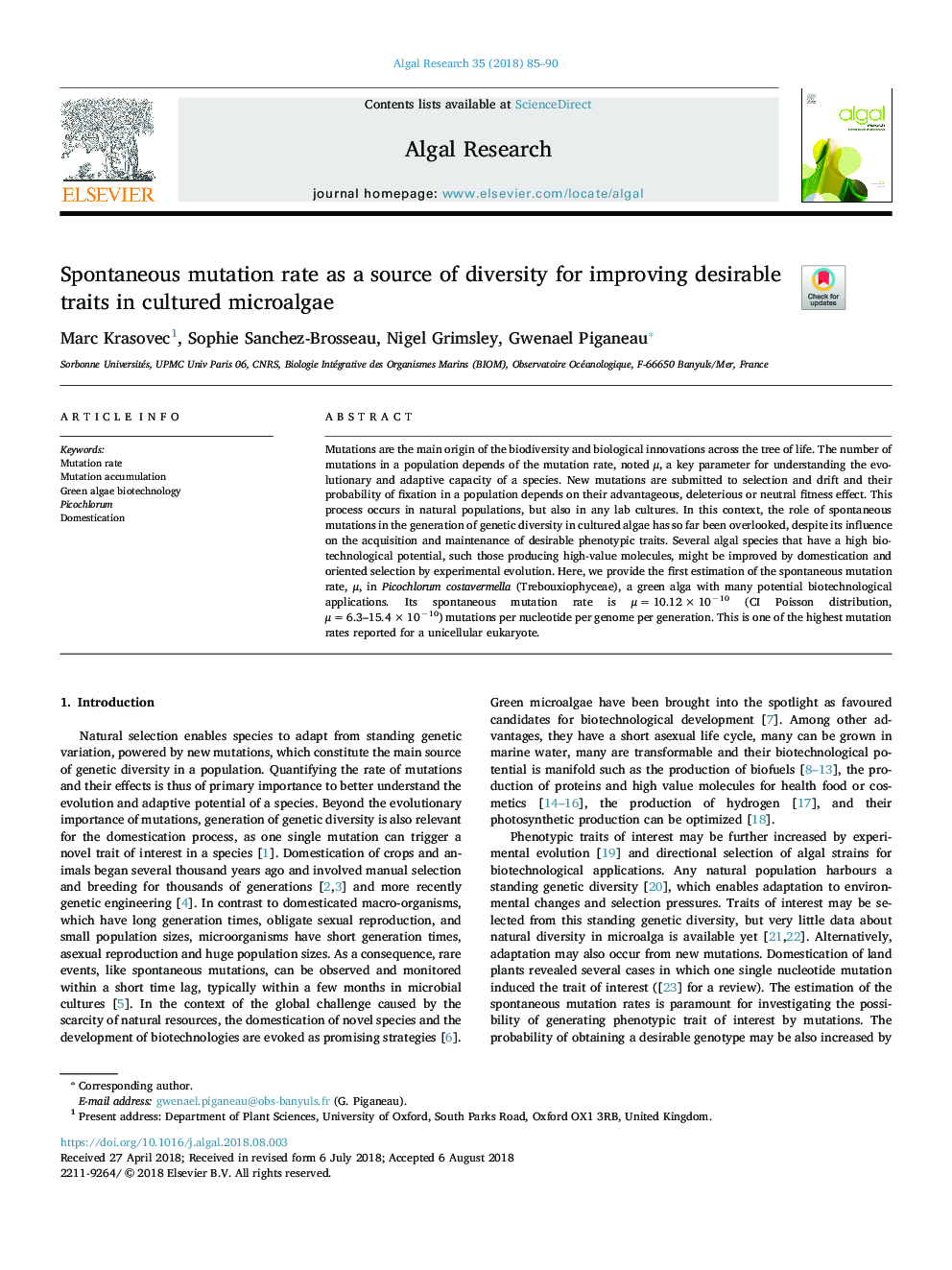| Article ID | Journal | Published Year | Pages | File Type |
|---|---|---|---|---|
| 8943508 | Algal Research | 2018 | 6 Pages |
Abstract
Mutations are the main origin of the biodiversity and biological innovations across the tree of life. The number of mutations in a population depends of the mutation rate, noted μ, a key parameter for understanding the evolutionary and adaptive capacity of a species. New mutations are submitted to selection and drift and their probability of fixation in a population depends on their advantageous, deleterious or neutral fitness effect. This process occurs in natural populations, but also in any lab cultures. In this context, the role of spontaneous mutations in the generation of genetic diversity in cultured algae has so far been overlooked, despite its influence on the acquisition and maintenance of desirable phenotypic traits. Several algal species that have a high biotechnological potential, such those producing high-value molecules, might be improved by domestication and oriented selection by experimental evolution. Here, we provide the first estimation of the spontaneous mutation rate, μ, in Picochlorum costavermella (Trebouxiophyceae), a green alga with many potential biotechnological applications. Its spontaneous mutation rate is μâ¯=â¯10.12â¯Ãâ¯10â10 (CI Poisson distribution, μâ¯=â¯6.3-15.4â¯Ãâ¯10â10) mutations per nucleotide per genome per generation. This is one of the highest mutation rates reported for a unicellular eukaryote.
Related Topics
Physical Sciences and Engineering
Energy
Renewable Energy, Sustainability and the Environment
Authors
Marc Krasovec, Sophie Sanchez-Brosseau, Nigel Grimsley, Gwenael Piganeau,
